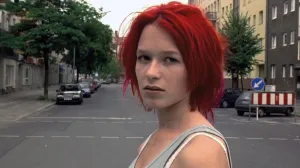
The arrival of The Wicked + The Divine #45 marks the conclusion of one of Image Comics’ most fervent fandoms and critically-acclaimed series. Many readers of this site were treated to the conclusion of a similarly epic story, one involving magic and world-ending stakes, that focused on storytelling as its thematic denouement earlier this year in Game of Thrones. As video essayist Lindsay Ellis already outlined in a thorough two part breakdown (found here and here), that particular series collapsed partially because its perspective on the value of storytelling was self-indulgent and poorly articulated. The Wicked + The Divine avoids similar pitfalls and delivers a powerful statement on what stories mean and how they impact their audience. It is the sort of series that understands what it has been saying from the very start and adds value to every issue that precedes its finale.
Videos by ComicBook.com
This is so important for a long-running story because the ending of a story is almost always its conceit. A slapdash, ill-considered ending can ruin years of careful work because it leaves all of that effort and craft without much meaning. The final pages of The Wicked + The Divine, on the other hand, read as though they were intended from the very beginning, balancing and informing the pages of its first issues in a fashion the enhance re-reading rather than ruining a complete experience.

The End is the Beginning is the End
The Wicked + The Divine was a hit from its very first issue. It debuted only about two years after Saga in the midst of the Image Comics renaissance when it seemed inevitable that the creator-owned publisher would soon transform the Big Two into a “Big Three.” While those aspirations may not have been achieved, this one series stands out as one of a few high watermarks, creating a constant conversation about the series and a dedicated fandom to its robust pantheon of pop star gods. While the story certainly evolved over the past five years, many of the motifs present at the start have remained significant across all 45 issues and multiple special one-shots.
The most notable hook from The Wicked + The Divine #1 was the murder mystery introduced in its final pages, a familiar scenario of “Who framed Lucifer?” With those answers long resolved and the style of storytelling and focus of the story altered many times, it’s the presentation of that first issue which still resonates. The rhythm and beat of its pacing, six panel grids and four-part countdowns, are summoned one final time in this final issue. More significantly, the ideas from that first issue are called forth once more. The introduction of this story emphasized the role of Laura as a fan. Her role was that of a worshipper who aspired towards the works of others. She was a fan of Amaterasu and Lucifer and other deities, each with their own body of work and aesthetic; she played a role that would be mimicked by a legion of fans, many dressed as their favorite characters before seeking out autographs and releasing fan art. Laura grew into a god and returned to humanity before her story ended, but the ideas that swirled about her are still forming a vortex in readers’ minds in these final pages.

An Address to the Reader
Much of The Wicked + The Divine #45 delivers a coda composed of final farewells and a brief look at how the story’s survivors lived their lives post-godhood. It’s catharsis for readers to know what happened to a series they invested so much of themselves within, just as Laura invested her own identity in live music and bigger-than-life idols at its very start. That makes the pivot in the final few pages so essential as The Wicked + The Divine focuses on the reader rather than itself. Laura turns her gave from her oldest and dearest friends in this fictional tale onto the people who have been present from the very start, the audience, to deliver one final message.
The style of this address is reminiscent of Tyrion Lannister’s final speech in Game of Thrones. It strives to encapsulate what so many years of work was really about, this time dismissing the very barest illusion of separation and appealing directly to those who are actually hearing this monologue. What separates The Wicked + The Divine from so many other grand, final speeches is that this one is tied into everything that preceded it.
There is the familiar six-grid format, the four-part countdown, the snap of magic, and a statement to be made about the thematic heart of this story. However, this collection of familiar elements is not deployed to affirm the greatness of the story that is ending. It’s made to be about the reader who was led to view Laura as an audience surrogate.

The Invitation of a Blank Page
Laura’s empowerment throughout the course of The Wicked + The Divine was a fictional empowerment. Her godhood and self-actualization were the construction of a small team of creators, a life well lived but never truly real. At her absolute best, Laura attempted to provide inspiration for her very real fans by overcoming the rare challenges of fame and the more common struggles of everyday life. She offered a point of inspiration. In her final moments, she transforms so much subtext into the most direct text possible, reminding readers that she is not real. Her story however resembles reality.
Fading out across a six-panel and then a four-panel grid, Laura relinquishes her own story in a sequence that shouts through its softly-spoken final moments at readers that this too is a construct. What comes next is more important than anything that came before, and what comes next are six white pages ready for anything to be written and drawn upon them. It is an invitation to real empowerment, a reminder that every creation is made by people and people are capable of creating anything. This is the final story of The Wicked + The Divine, it is every story and no story at all. It is a reminder that art only holds the power we give it and that we can provide art with so much power. The Wicked + The Divine delivers its perfect ending by crying out for those reading it to make their own stories and discard the works of others when they are no longer useful. It’s a call to real empowerment and the best possible ending for a story that is over.








